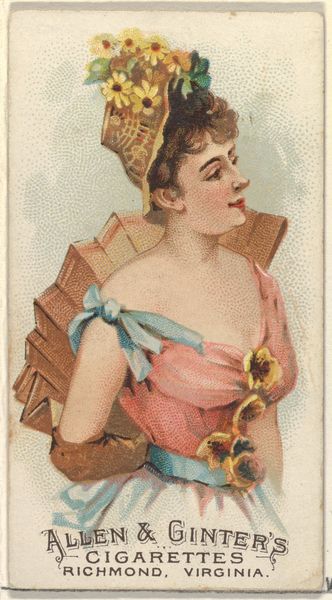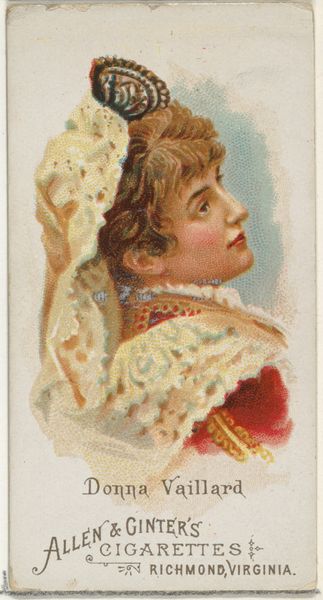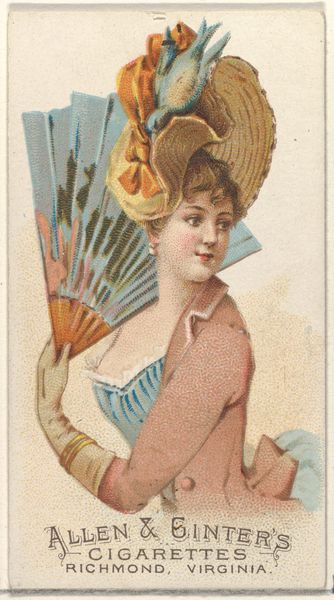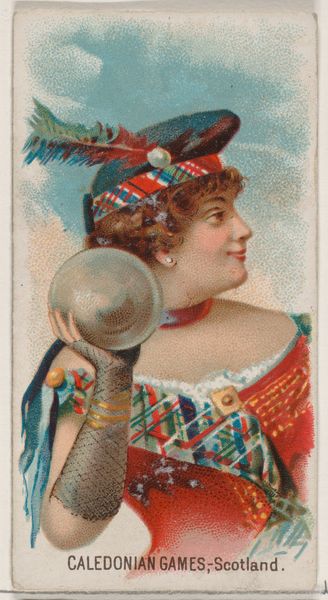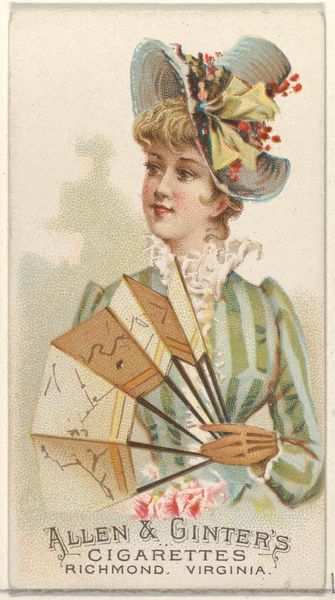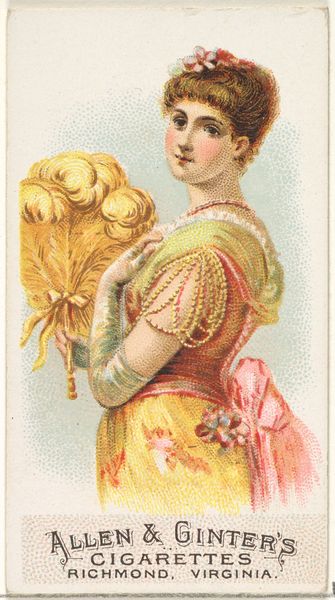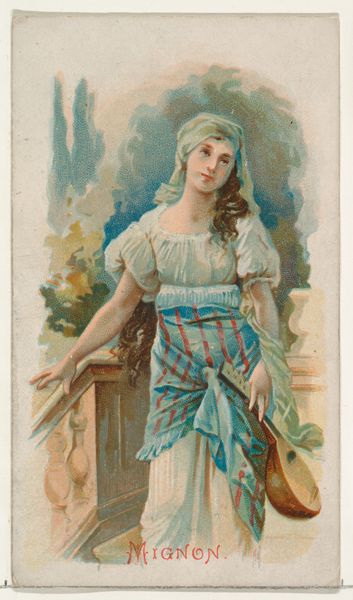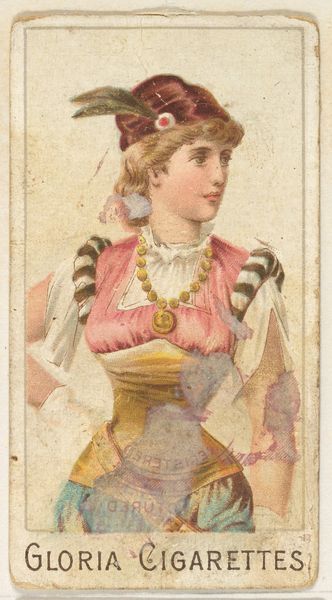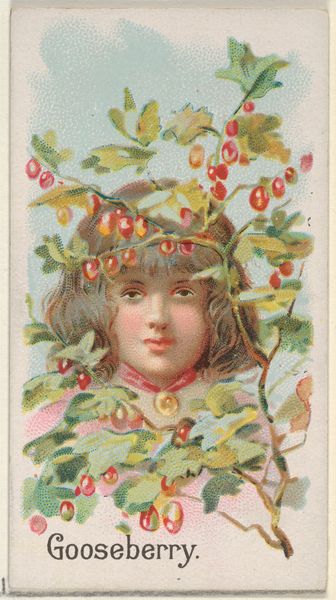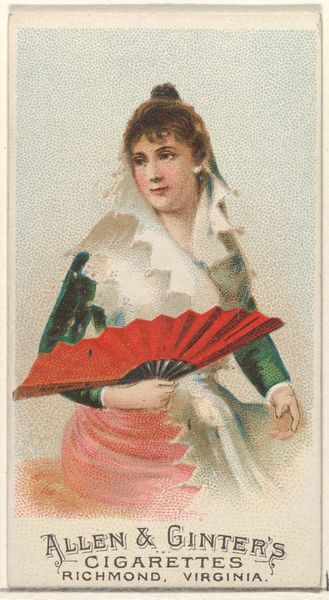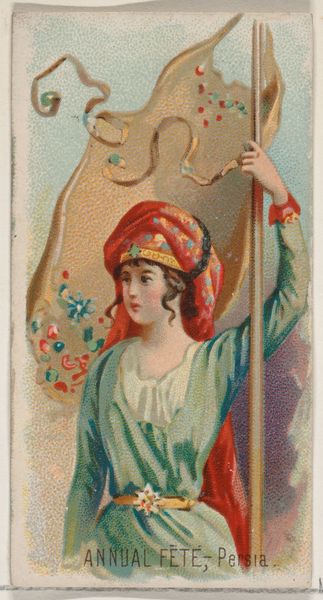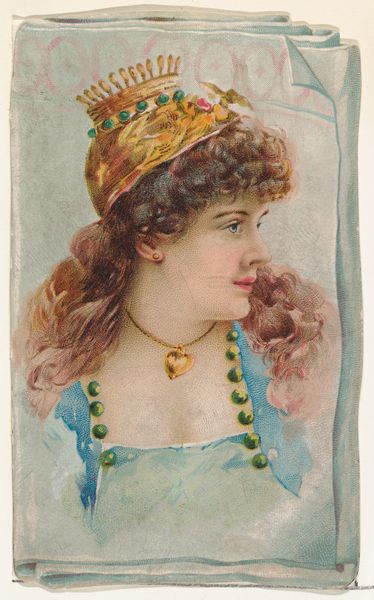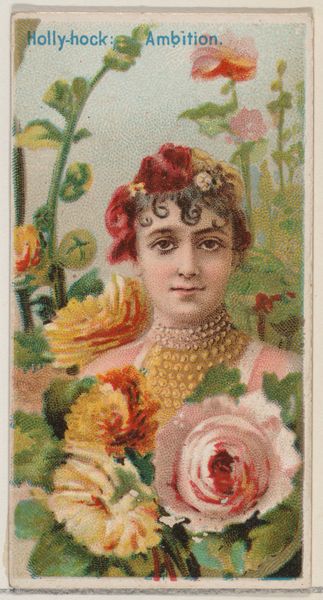
Gustavus Adolphus Festival, Sweden, from the Holidays series (N80) for Duke brand cigarettes 1890
0:00
0:00
drawing, coloured-pencil, print
#
portrait
#
drawing
#
coloured-pencil
# print
#
figuration
#
coloured pencil
#
men
#
history-painting
#
academic-art
Dimensions: Sheet: 2 3/4 x 1 1/2 in. (7 x 3.8 cm)
Copyright: Public Domain
Editor: This chromolithograph from 1890 by W. Duke, Sons & Co. is titled "Gustavus Adolphus Festival, Sweden." It’s from a series of cigarette cards. The main figure looks almost regal, yet dreamy, with the battle scene floating above her. What strikes you when you look at it? Curator: It's a fascinating juxtaposition, isn’t it? This young woman, depicted in profile with what appears to be a folk costume and elaborate headwear, positioned directly beneath a scene of intense conflict. This image taps into layers of cultural memory. Consider Gustavus Adolphus, a Swedish king seen as a pivotal figure in Swedish history. What symbolic purpose do you think he serves in the national psyche? Editor: He was a military leader, right? So the battle imagery signifies Swedish power? Curator: Partly. He also represents a Protestant champion and a figure of national pride. This print connects to that deep-seated sense of identity and continuity. Even on a cigarette card, you see this layering of meaning. Think about the symbolism of her costume: the colours, patterns, and particularly that wreath upon her head. Editor: It feels connected to both pagan and Christian traditions, almost like a maypole celebration or a saint’s crown? Curator: Exactly! This weaving together of historical and cultural elements is key. We see a connection to the past and a kind of idealized representation of Swedish identity that endures through the centuries. How does that resonate with you, given its function as a cigarette card? Editor: It's surprising that a commercial product would tap into such deeply rooted symbols, but I guess it was a way to add value and meaning to something quite ordinary. I see how many cultural references can exist within one small drawing. Curator: Indeed, and it prompts us to examine how cultural identity is constructed and transmitted, even through seemingly trivial objects.
Comments
No comments
Be the first to comment and join the conversation on the ultimate creative platform.
